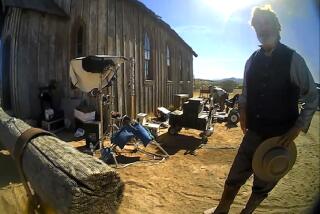FBI’s Crime Scene Bullet Analysis Test Flawed
- Share via
A panel of government scientific advisors has found that an FBI forensic technique long used to link bullets with assailants is scientifically flawed and potentially misleading to juries -- a finding that could affect hundreds of past convictions.
The method, which measures the likelihood of a chemical match between bullets found at crime scenes and those found in the possession of a defendant, has been used for more than three decades in criminal cases involving gun violence. The Times obtained a draft of key sections of the report, which is expected to be formally released by the National Research Council in early December.
“In the future, it would be very difficult for prosecutors to get that kind of evidence admitted,” said William C. Thompson, a professor of law and criminology at UC Irvine. “It raises substantial concerns about the viability of convictions obtained based on such statements in past cases.”
Thompson called the report “a slap in the face of the FBI.”
A spokesperson for the FBI in Washington said the agency would not comment on the report until it was finalized.
The National Research Council, based in Washington, also would not comment on the report, but a source close to the study indicated that its primary conclusions would stand in the final version.
The report is “a very substantial development -- a significant indictment of the technology,” said David L. Faigman, a professor of law at UC Hastings College of the Law in San Francisco. “The NRC has such prestige that I can’t imagine that a court, after the NRC report, would permit this kind of testimony.”
The chemical analysis of bullets found at crime scenes involves analyzing the material for traces of contaminants or additives, such as tin and antimony. The precise amount of contaminants is then compared to the results from bullets found in a suspect’s possession.
FBI examiners have often stated or implied in court that a bullet can be traced to a specific manufacturing batch -- even to a particular box. For example, John P. Riley, then an FBI lab examiner, testified at a 1988 murder trial: “From my 21 years of experience doing bullet-lead analysis, I can determine if bullets came from the same box of ammunition.... That is the case that we have here.”
His testimony played a key role in the conviction of the defendant, who was later executed.
In more recent cases, FBI examiners have tended to match a particular bullet not to a single box, but to a group of boxes manufactured on or around the same day at the same factory.
The technique has offered a way to solve crimes involving gun violence when no gun was found. It has strengthened weak cases in which evidence is scarce or circumstantial.
A Times investigation of the technique published in February suggested that the FBI’s use of lead-analysis evidence might have been based on faulty assumptions that greatly overstated its scientific significance.
After criticism from independent experts, the FBI commissioned the lead-analysis study from the National Research Council, considered the nation’s preeminent group for assessing science and technology. The panel, which included experts in chemistry, law and statistics, studied the method for nearly 10 months.
The panel substantially agreed with recent research indicating that bullets from the same source of lead can significantly vary in their chemical makeup, and bullets from different sources -- even those manufactured years apart -- can share nearly identical amounts of trace elements.
The finding contradicted some prosecutors’ depictions of each batch of lead as being unique, like a snowflake or fingerprint. The study suggests that the number of “matching” bullets is impossible to determine and could be in the tens of millions or far higher -- dramatically reducing the significance of a match.
“References to ‘boxes’ of ammunition in any form should be avoided as misleading under Federal Rule of Evidence 403,” the panel concluded. “Detailed patterns of the geographical distribution of ammunition are unknown, and as a result, experts should not testify as to the probability that the crime-scene bullet came from the defendant.”
The draft report also questioned the statistical basis of the FBI’s analysis, which had been criticized by the bureau’s own statistical consultant as scientifically unsupported. The panel proposed new research and changes in which statistical tests are used. Although the panel stopped short of condemning the technique outright, it sharply disagreed with how FBI examiners have often represented bullet evidence in court.
“If we were to embrace this report, then the test really has very little utility,” said John Thornton, professor emeritus of forensic science at UC Berkeley. “It’s really watered down the significance and the impact.”
More to Read
Sign up for Essential California
The most important California stories and recommendations in your inbox every morning.
You may occasionally receive promotional content from the Los Angeles Times.










